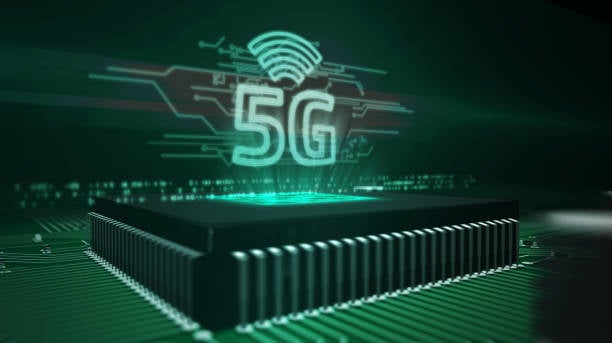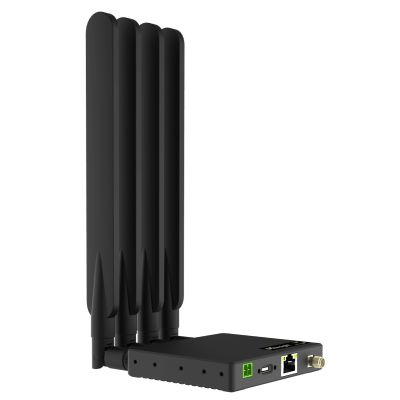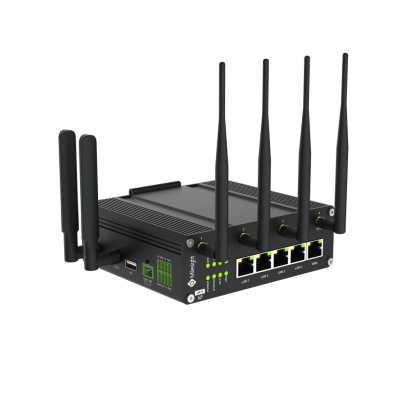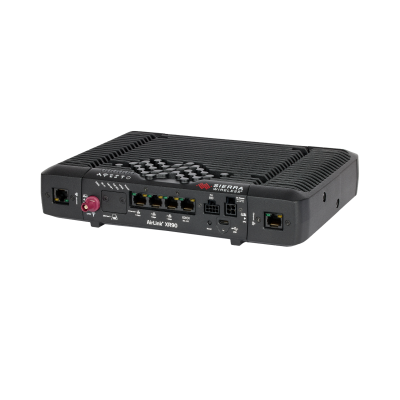Blogs & Articles
Decoding 5G/LTE Gateways & Routers: A Comparative Exploration

Introduction
The emergence of new technology has introduced a revolutionary phase of connectivity, reshaping our digital experiences. At the heart of this evolution are 4G gateways, 5G gateways, and LTE modules. The collaboration between 5G/LTE Gateways & RF - LTE modules allows for a seamless integration, leveraging the strengths of each technology.
While 5G offers blazing-fast speeds and low latency, LTE provides widespread coverage and reliability, creating a complementary ecosystem for enhanced wireless communication. LTE gateways and routers also bring forth a multitude of advantages. They serve as the backbone for high-speed, low-latency connectivity, supporting various applications from smart homes to industrial automation. With features like multi-gigabit data transfer rates, versatility in deployment, and robust connectivity, LTE gateways and routers offer a reliable and efficient solution for diverse connectivity needs.
The routers linked to your computer play a critical role in receiving, analysing, and forwarding data across computer networks. These gateways and routers act as the linchpin, facilitating seamless data transfer between devices and the expansive telecommunications network. Each piece of data is assigned an internet protocol (IP) address, which routers examine before directing it to its intended destination. Some routers establish connections between ethernet cables and computers, while others link to more extensive networks like local area networks (LANs) or larger wide area networks (WANs), such as the Internet.
These routers connect to devices and facilitate internet connections. All your wireless devices connect to your router, utilising the internet connection to access your preferred websites and apps. In scenarios demanding the utmost security and reliability, essential applications rely on cellular connectivity. Whether you’re looking to boost the security of your financial transactions, route data in challenging outdoor environments, or support communication for emergency services, transit, and industrial applications - you may find your answer lies in LTE, 4G, or 5G.
Read on to learn everything you need to know about 4G, LTE, 5G modules, 5G routers, cellular routers, and more.
Comparing LTE, 5G, and 4G: understanding the differences
When comparing LTE, 5G, and 4G, several key factors come into play, shaping the landscape of wireless connectivity. From speed and latency to capacity, pricing, and infrastructure complexity, understanding these differences is crucial for making informed decisions in the evolving world of telecommunications.
- Speed
- Latency
- Capacity
- Price and Availability
- Complexity
- Speed: 5G boasts significantly faster data speeds compared to both LTE and 4G, offering enhanced download and upload rates for a more efficient user experience.
- Latency: With lower latency, 5G reduces the time it takes for data to travel between devices and the network, making it ideal for real-time applications, outperforming both LTE and 4G in this aspect.
- Capacity: 5G networks have a much higher capacity, supporting a greater number of connected devices simultaneously, making them more suitable for the increasing demands of IoT and other bandwidth-intensive applications, which has caused many tech experts to speculate that IoT 5G is the wave of the future.
- Price and Availability: While 5G is evolving, LTE tends to have broader coverage and established infrastructure, making it more widely available and potentially more cost-effective for some users. 4G often remains a reliable and economical choice in certain regions.
- Complexity: The implementation of 5G involves a more complex infrastructure with advanced technologies, requiring significant investment and time. LTE and 4G, being more established, present a simpler and more widespread deployment.
Our Most Popular 4G/5G/LTE Gateways
The demand for 5G/LTE gateways and routers has surged in tandem with the growing reliance on high-speed, low-latency connectivity. In today's interconnected world, where businesses, homes, and industries depend on seamless communication and data exchange, these gateways and routers play a pivotal role. The transition to 5G technology promises unprecedented data speeds and network capabilities, making 5G/LTE gateways essential for unlocking the full potential of this advanced connectivity.
For your consideration, here are some of our best-selling 4G/5G/LTE gateways…
Milesight IOT UF31 High Performance 5G Modem
The Milesight IOT UF31 High Performance 5G Modem stands out as a high-performance 5G modem tailored for wireless networking. Its compatibility with 5G NSA &SA, 4G LTE, and 3G networks makes it an excellent choice for WAN connections to firewalls and various field devices. Equipped with a USB Type-C port and GbE port, and featuring a built-in watchdog for connection maintenance, the UF31 ensures seamless connectivity. Its compact size facilitates effortless installation or embedding, rendering it well-suited for diverse applications, including smart offices, video surveillance, digital signage, industrial automation, traffic systems, robots, and similar scenarios.

UR75 - 5G Industrial Cellular Router Dual
The UR75 - 5G Industrial Cellular Router Dual use a high-performance industrial platform, featuring a quad-core CPU and cellular module. The UR75 ensures wire-speed network access in an exceptionally secure and reliable manner, thanks to its ultra-compact design, and recent upgrades in cellular technology now enable the UR75 to access ultra-fast broadband through a 5G cellular network. Ideal for diverse applications such as smart grids, digital media installations, industrial automation, telemetry equipment, medical devices, digital factories, finance, payment devices, environment preservation, and water conservation, the UR75 proves particularly versatile.

AirLink® XR90 5G High-Performance Multi-Network Vehicle Router
The AirLink XR90 5G High-Performance Multi-Network Vehicle Router is tailored specifically for public safety and transit applications. It features single/dual 5G cellular radios and dual independent 4x4 MIMO Wi-Fi 6 and prioritizes complete device-to-cloud security. Leveraging an embedded LPWA network, the XR90 provides zero-touch configuration, over-the-air factory resets, and remote support, irrespective of the primary WAN connections. Its cartridge-based design ensures long-term expandability and upgrade capabilities.

Making The Right Choice: Is 4G/5G Better Than LTE?
Choosing between 4G/5G and LTE necessitates careful consideration of advantages and drawbacks. The transition to 4G and 5G introduces faster speeds and lower latency, enhancing real-time applications and supporting more connected devices. Nevertheless, potential challenges include infrastructure costs and the ongoing expansion of 5G coverage. The decision ultimately hinges on specific needs and priorities, recognizing the considerable advantages each technology offers. With 4G/5G's ability to deliver swifter data speeds and a more robust network, the trajectory suggests that, for many users, the move beyond LTE promises a more advanced and efficient connectivity experience.
FAQs :
- What distinguishes a "Fast Speed 4G/5G Network" from traditional networks?
- Is LTE the same as 5G?
- Does an LTE router need a SIM card?
- What is the best 5G modem for wireless networking applications?
- How does a cellular gateway work?
- How does the dual 5G cellular feature benefit users?
What distinguishes a "Fast Speed 4G/5G Network" from traditional networks?
A high-speed 4G/5G Network distinguishes itself from traditional networks by delivering significantly faster data speeds, minimised latency, and expanded capacity. These networks, particularly 5G, provide swift downloads, smooth streaming, and overall improved internet performance. The reduced latency is critical for real-time applications, such as video calls and online gaming, and the increased capacity ensures seamless operation for a growing number of connected devices. The networks' efficiency is bolstered by advanced technologies and architectures, optimising resource utilisation. This evolution not only supports existing applications but also fosters the development and adoption of innovative technologies such as augmented reality, virtual reality, and the Internet of Things, capitalising on the high-speed and low-latency capabilities intrinsic to 4G and 5G networks.
Is LTE the same as 5G?
No; while LTE and 5G are both cellular network technologies, they differ in terms of speed, capacity, latency, and the overall user experience. While LTE delivers faster data speeds and improved performance compared to its predecessor, 5G boasts a significant advancement with significantly faster speeds, lower latency, and increased capacity. The fifth-generation technology is designed to revolutionise wireless communication by supporting not only enhanced mobile broadband but also critical machine-to-machine communication and extensive IoT deployments. Effectively, 5G is the next evolutionary step beyond LTE, offering unprecedented connectivity and enabling new possibilities for a diverse range of applications.
Does an LTE router need a SIM card?
Yes, an LTE router typically requires a SIM card to establish a cellular connection. The SIM card is crucial for linking the LTE router to the cellular network, providing the necessary credentials for the router to access mobile data services. Without the SIM card, the router would lack the essential information required to connect to the mobile network and access the internet or other data services provided by the cellular carrier.
What is the best 5G modem for wireless networking applications?
The UF31 High Performance 5G Modem stands as one of the best high-performance 5G modems going around right now. Meticulously crafted for wireless networking in a 5G environment, it’s able to support 5G NSA & SA, 4G LTE, and 3G networks, with an optimal WAN connection for firewalls and various field devices. Equipped with a USB Type-C port, a GbE port, and a built-in watchdog to ensure connection stability, the UF31 excels in maintaining reliable connections. Its compact size facilitates effortless installation or embedding, making it particularly suitable for a range of applications, including smart offices, video surveillance, digital signage, industrial automation, traffic systems, robots, and similar domains. You can learn more about the UF31 and its many impressive features here.
How does a cellular gateway work?
A cellular gateway is a device that facilitates communication between local networks and cellular networks, enabling seamless data transfer and connectivity. Operating much like a bridge, the cellular gateway establishes a link between devices within a local area, such as a home or business network, and the broader cellular infrastructure. It typically incorporates a cellular modem, which allows it to connect to mobile networks like 4G LTE or 5G. By leveraging cellular connectivity, these gateways provide an alternative or backup to traditional wired internet connections, enhancing flexibility and reliability. They play a crucial role in scenarios where wired connections may be unavailable, unreliable, or impractical. Cellular gateways often include features such as routing capabilities, security protocols, and remote management options, making them versatile solutions for various applications, including IoT deployments, remote monitoring, and ensuring continuous connectivity in diverse environments.
How does the dual 5G cellular feature benefit users?
The dual 5G cellular feature offers users a host of advantages, including enhanced data speeds and increased bandwidth by utilising two 5G connections simultaneously. This ensures faster data transfer and improved network performance. The feature also enhances reliability by allowing devices to connect to multiple 5G networks simultaneously, providing redundancy in areas with network congestion or signal issues. With improved coverage and load balancing capabilities, users experience consistent and optimised connectivity, seamlessly transitioning between networks. For businesses, this feature contributes to enhanced continuity during critical tasks, and overall, dual 5G supports future-proof devices, ensuring compatibility with emerging technologies and network advancements.
Conclusion
5G devices are ushering in a new era, empowering diverse applications across smart homes, businesses, industrial automation, and the Internet of Things with multi-gigabit data transfer rates, low latency, and versatile adaptability. As the intricacies of 5G/LTE gateways and routers bloom, it’s increasingly evident that these technological marvels are much more than simple connecting devices; they are forging the path toward a future where speed, reliability, and connectivity redefine our digital landscape.
With a dedicated focus on elevating connectivity and performance, Tekdis offers innovative solutions in industrial computing, communication, and embedded systems. The company's proficiency extends to the supply and support of components, including accessories for 5G/LTE Gateways, showcasing a dedication to enabling smooth connectivity solutions for businesses and industries. We provide a wide selection of accessories for 5G/LTE Gateways crafted to optimise the performance and features of your Sierra Airlink series. Included in the LTE Gateway accessories are DIN rail brackets, AC power supplies, and user-friendly management software, simplifying the process of overseeing and monitoring your LTE connectivity.
Positioned at the forefront of the industry, Tekdis is committed to delivering reliable and advanced technology solutions to address the ever-evolving needs of the digital landscape. We also offer an extensive range of 5G/LTE gateways, routers and antennas, which can deliver cellular connectivity that’s both dependable and secure enough for you to execute financial transactions or perform other sensitive communications in any environment, even the rugged outdoors. You can also browse the full range of our products over at the Tekdis website, where you will be able to find everything from medical solutions and cameras to digital signage displays and industrial tech. Can’t find what you’re looking for? Don’t be afraid to hit us up directly via the Tekdis Contact Us page, and one of our trusty team members will get back to you to assist as quickly as possible. Easy!



